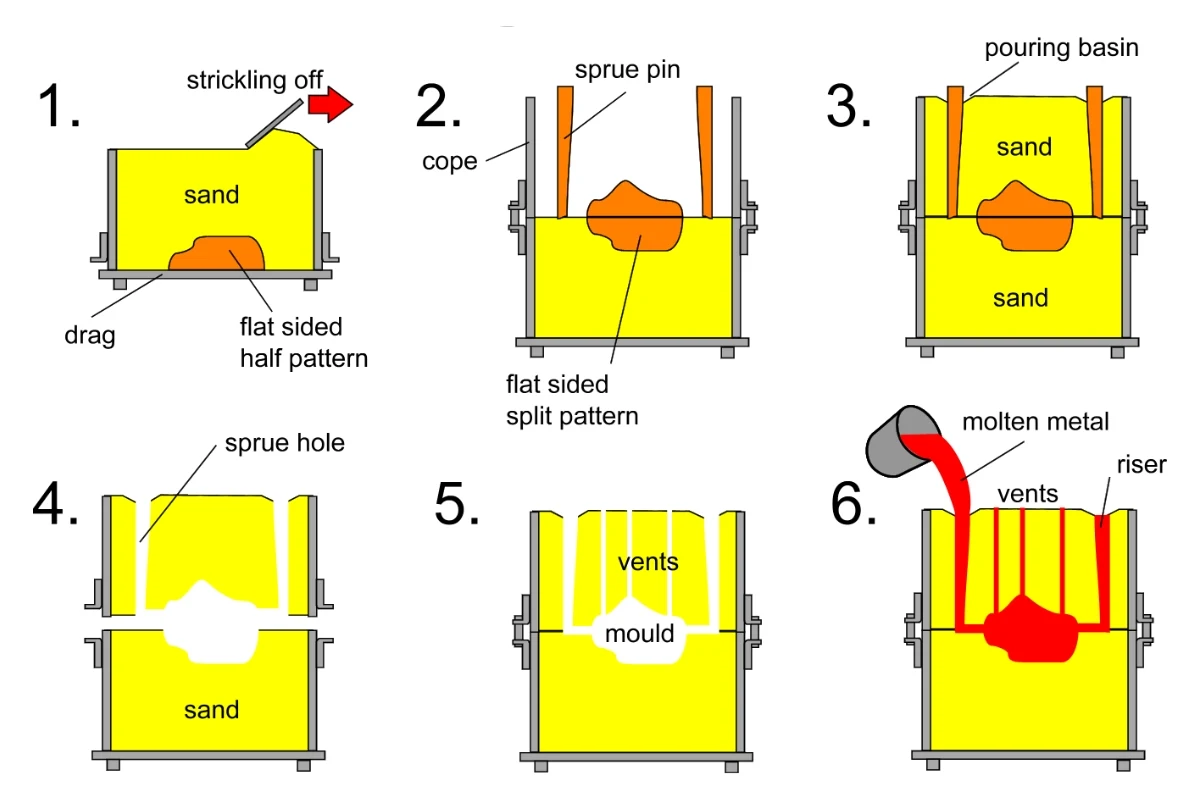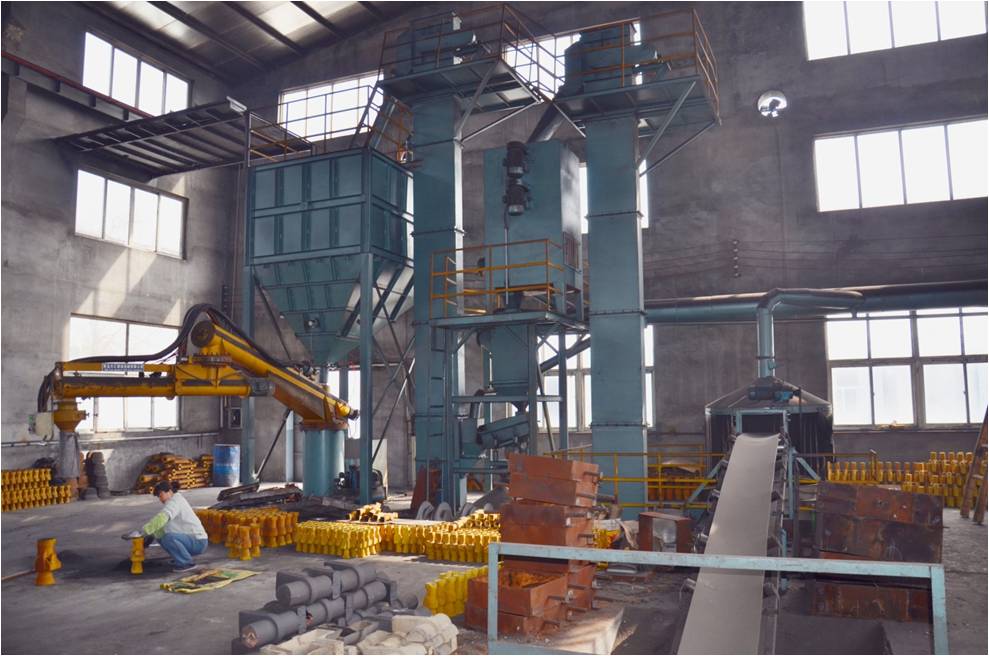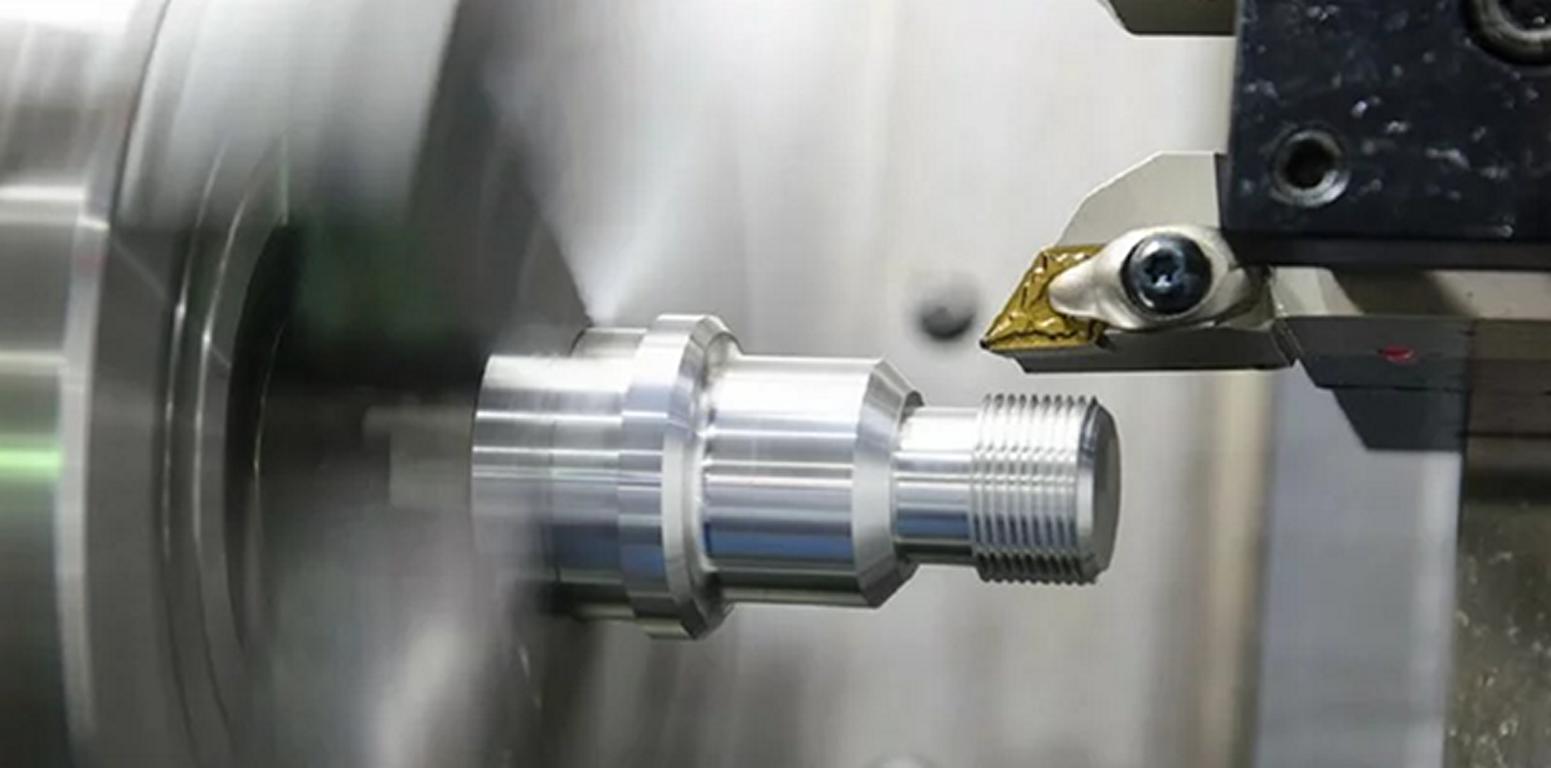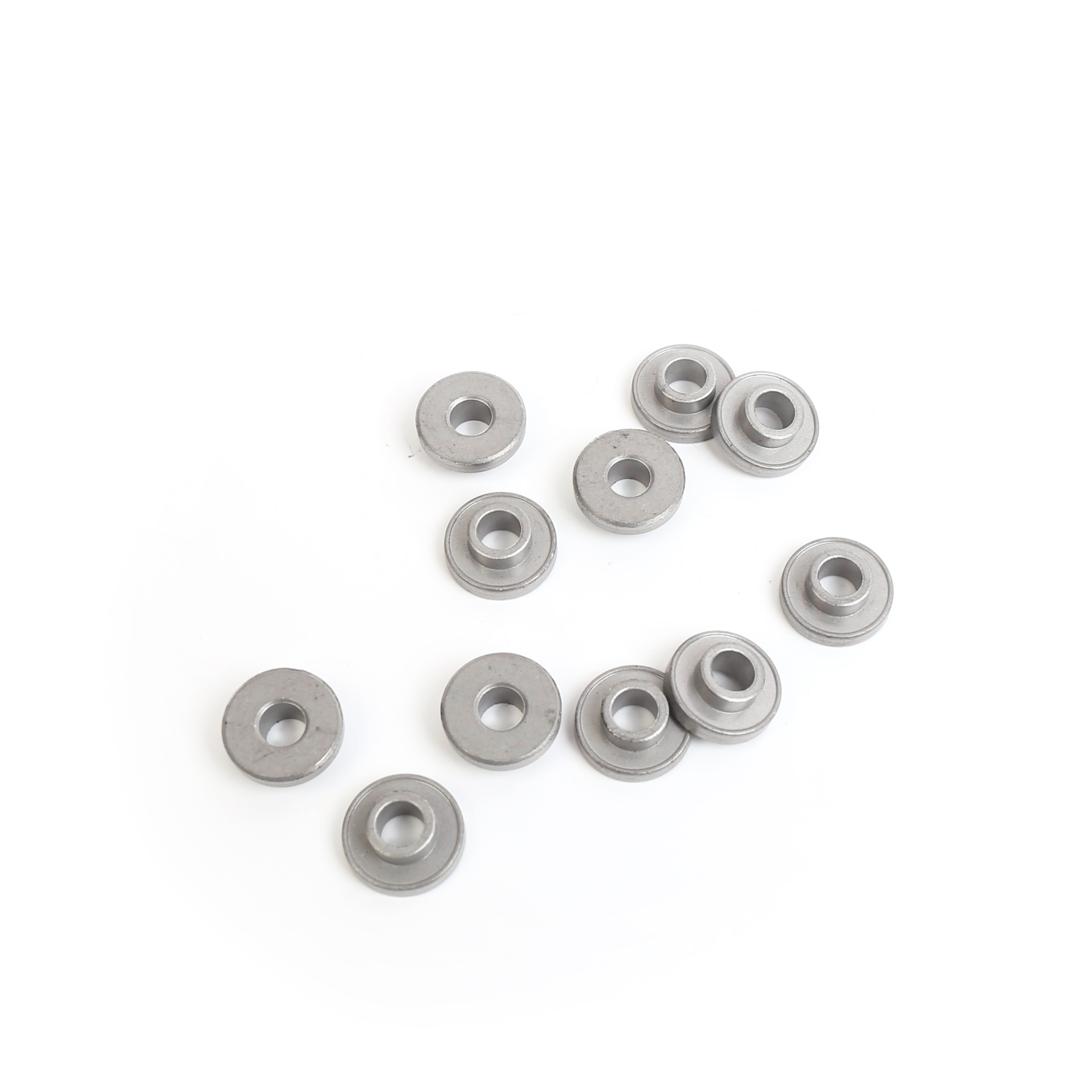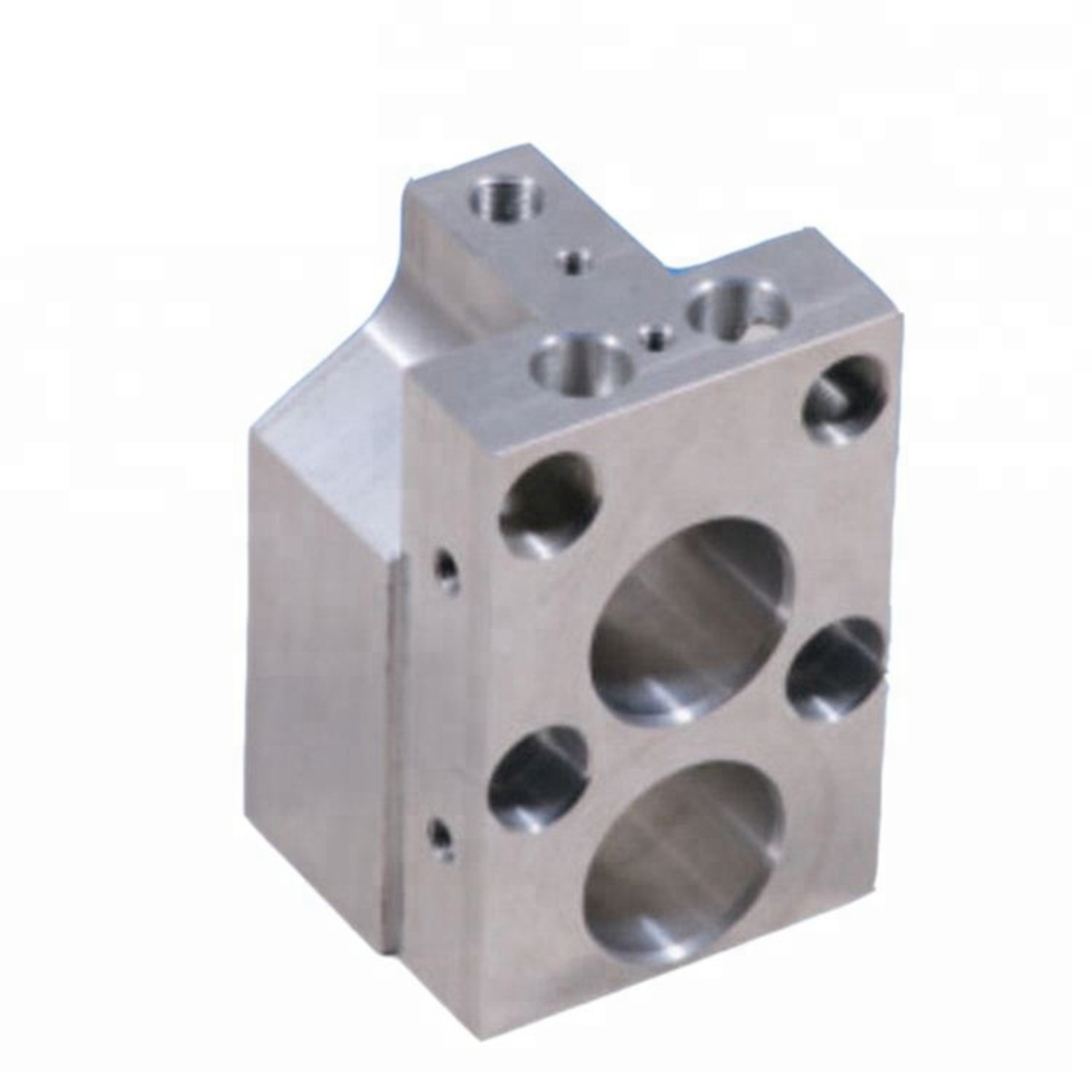Before the casting process begins, several materials such as sand, molten metal, and other casting tools are brought together. The sand serves as the main molding material, and it is important to pick the right type of sand to get good cast parts.
Pattern creation:
The pattern is a model of the part. It’s made from wood, plastic, or metal. This model is pressed into molding sand to form the shape.
Patterns must be designed to allow for shrinkage and machining. Some are split in two for easy mold removal.
Core making:
The cores are used to make hollow sections. They are placed inside the mold before pouring the molten metal. They are usually made of special sand that is mixed with binders, which help the core to hold its shape under the intense heat. After casting is done, the core breaks apart and is removed.
Mold preparation:
Inside the bottom and top halves of the mold, the sand is pressed around the pattern. These are called the cope (top) and drag (bottom). Once the sand is firm, the pattern is removed. This leaves a cavity shaped like the part.
Some molds use special coatings for a better surface finish. Others add metal or sand inserts to shape fine details. The sand must be packed tightly to improve the mold’s strength.
Gating & risers:
Molten metal enters through gates. These are tunnels cut into the mold. Metal flows from the gate into the main cavity. Risers are added above the part. They hold extra metal to feed the part as it cools and shrinks. Poor gating can lead to different kinds of defects.
Melting & pouring:
The metal is heated in a furnace. It melts and is poured into the mold. The metal must be clean and hot enough to fill every corner.
Pouring must be steady. If it’s too fast, it can lead to splashes, and if it’s too slow, the metal hardens too soon. Foundries train workers or use machines to get this step right.
Cooling & shakeout:
The metal cools inside the mold. After it hardens, the sand is broken away. This is called a shakeout. Leftover metal from gates and risers is cut off.
The part is cleaned using grinders or blasting. Inspectors usually check the part for flaws. If needed, it goes through machining to meet final specs.
Sand recycling:
Used sand can be cleaned and reused in order to save money and reduce waste. The sand goes through machines that shake, sift, and heat it. This removes dust, binders, and metal pieces. Most foundries are known to recycle over 90% of their sand.
